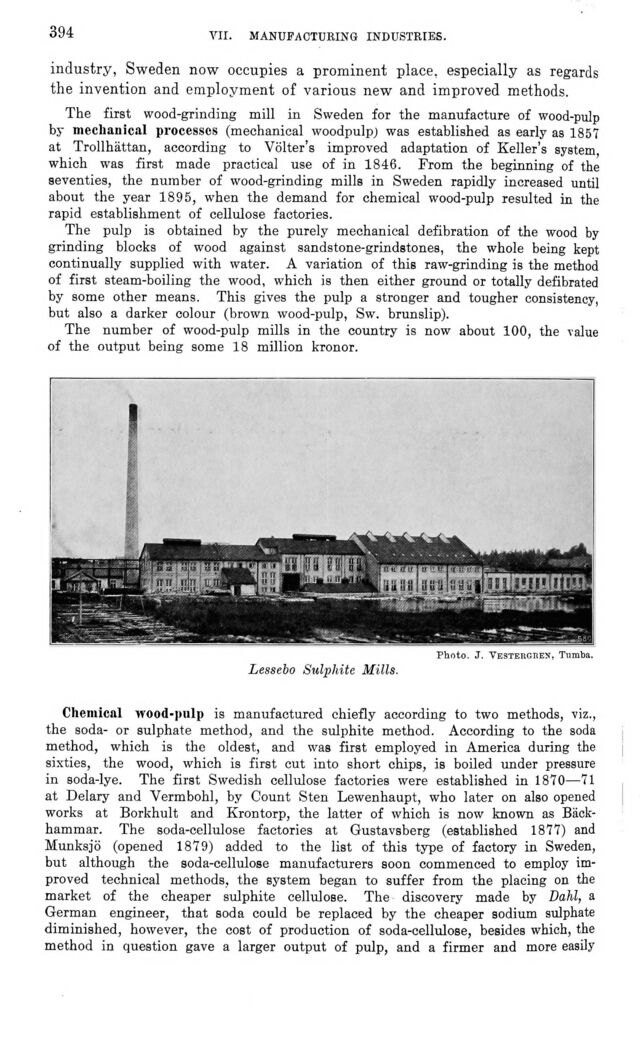
Full resolution (JPEG) - On this page / på denna sida - VII. Manufacturing Industries. Introd. by [G. Sundbärg] K. Åmark - 5. Timber-Ware Industry - Wood-Pulp Industry. By J. Vestergren

<< prev. page << föreg. sida << >> nästa sida >> next page >>
Below is the raw OCR text
from the above scanned image.
Do you see an error? Proofread the page now!
Här nedan syns maskintolkade texten från faksimilbilden ovan.
Ser du något fel? Korrekturläs sidan nu!
This page has never been proofread. / Denna sida har aldrig korrekturlästs.
394
vii. manufacturing industries.
industry, Sweden now occupies a prominent place, especially as regards
the invention and employment of various new and improved methods.
The first wood-grinding mill in Sweden for the manufacture of wood-pulp
by mechanical processes (mechanical woodpulp) was established as early as 1857
at Trollhättan, according to Volter’s improved adaptation of Keller’s system,
which was first made practical use of in 1846. From the beginning of the
seventies, the number of wood-grinding mills in Sweden rapidly increased until
about the year 1895, when the demand for chemical wood-pulp resulted in the
rapid establishment of cellulose factories.
The pulp is obtained by the purely mechanical defibration of the wood by
grinding blocks of wood against sandstone-grindstones, the whole being kept
continually supplied with water. A variation of this raw-grinding is the method
of first steam-boiling the wood, which is then either ground or totally defibrated
by some other means. This gives the pulp a stronger and tougher consistency,
but also a darker colour (brown wood-pulp, Sw. brunslip).
The number of wood-pulp mills in the country is now about 100, the value
of the output being some 18 million kronor.
Photo. J. Vestergben, Tumba.
Lessebo Sulphite Mills.
Chemical wood-pulp is manufactured chiefly according to two methods, viz.,
the soda- or sulphate method, and the sulphite method. According to the soda
method, which is the oldest, and was first employed in America during the
sixties, the wood, which is first cut into short chips, is boiled under pressure
in soda-lye. The first Swedish cellulose factories were established in 1870—71
at Delary and Yermbohl, by Count Sten Lewenhaupt, who later on also opened
works at Borkhult and Krontorp, the latter of which is now known as
Bäckhammar. The soda-cellulose factories at Gustavsberg (established 1877) and
Munksjö (opened 1879) added to the list of this type of factory in Sweden,
but although the soda-cellulose manufacturers soon commenced to employ
improved technical methods, the system began to suffer from the placing on the
market of the cheaper sulphite cellulose. The discovery made by Dahl, a
German engineer, that soda could be replaced by the cheaper sodium sulphate
diminished, however, the cost of production of soda-cellulose, besides which, the
method in question gave a larger output of pulp, and a firmer and more easily
<< prev. page << föreg. sida << >> nästa sida >> next page >>